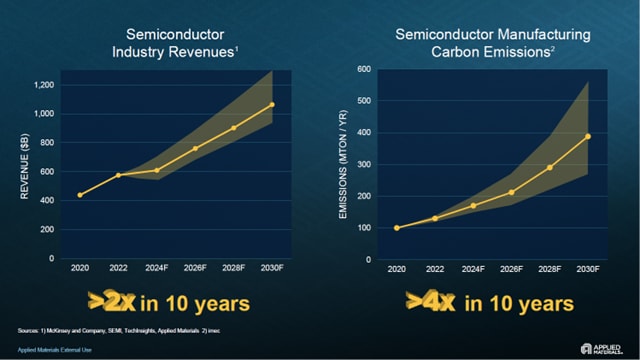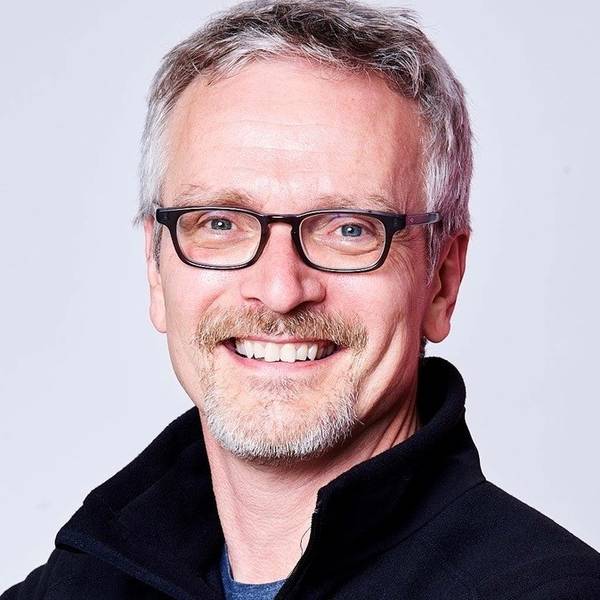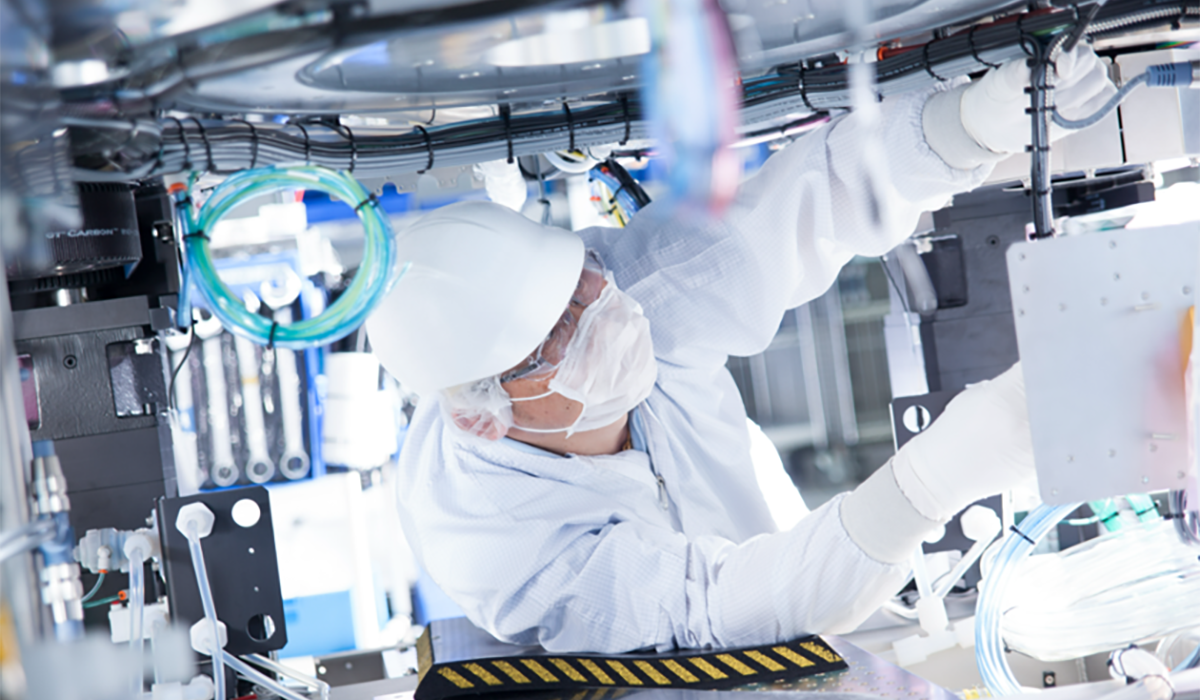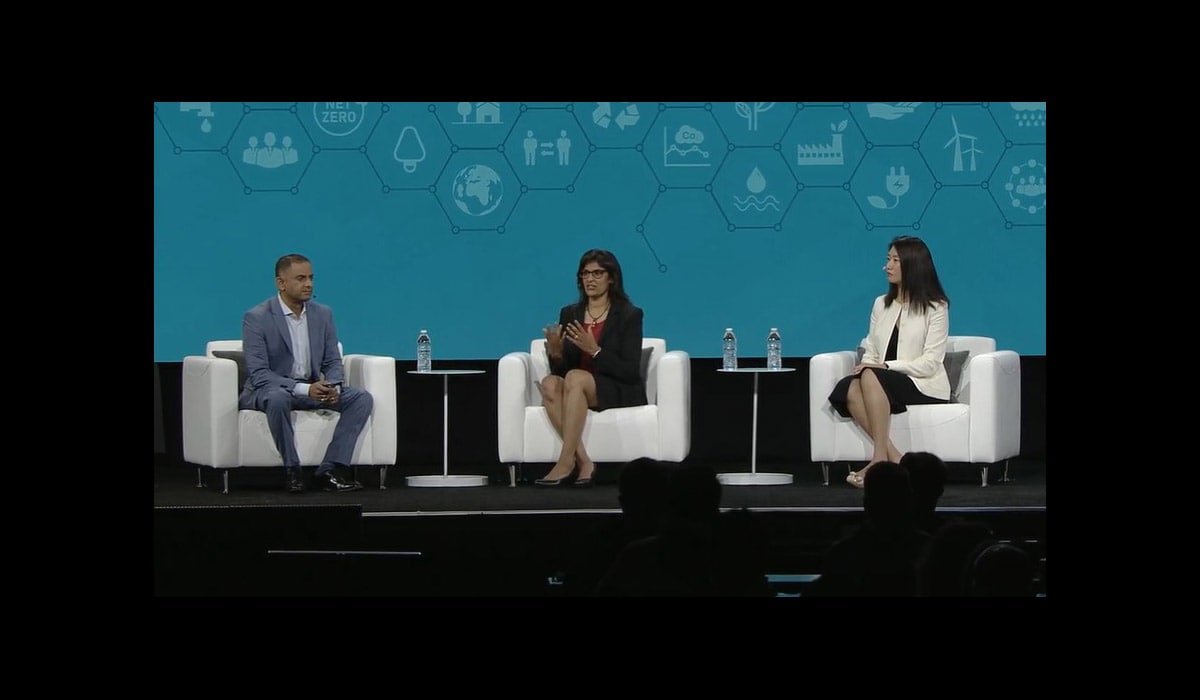Products & Technologies
Products & Technologies
Services
Resources
Posted
July 18, 2023

Stay updated on our content.
A Collaborative Pathway to Net Zero
By Chris Librie
Jul 18, 2023
SEMICON West 2023 is now in the rear-view mirror, yet its impact will be felt for many years to come. For the first time in my experience as a sustainability professional, I witnessed industry leaders coming to grips with an inherent contradiction: the promise of semiconductors marching toward becoming a $1 trillion market, while simultaneously creating a path to Net Zero carbon emissions. The industry’s growth and carbon footprint are invariably linked, presenting an enormous challenge that we must meet as an industry.
Applied Materials President and CEO Gary Dickerson presented a keynote titled, “A Collaborative Pathway to Net Zero,” where he delivered a call to action for the entire semiconductor industry to get serious about collaborating to execute real, achievable plans to reach Net Zero in carbon emissions. Gary shared Applied’s playbook for Net Zero – a framework we’ve been developing for more than a year. Significantly, that playbook goes beyond our own Scope 1 and Scope 2 emissions, which come from running the company and from the energy we purchase. In fact, Applied has made great progress in reducing our Scope 1 and 2 emissions, which Gary shared and you can read more about in our latest Sustainability Report.
However, the bulk of Gary’s talk was about Applied’s Scope 3 emissions, the upstream emissions from our supply chain and the downstream emissions from the use of our products by customers. Since these are not in our direct control, you might say that’s someone else’s problem. But Applied agrees with the Science Based Targets initiative (SBTi) framework, which says companies must reduce their Scope 3 emissions to achieve Net Zero. After all, these are over 99% of Applied’s footprint.
It’s not an easy task. Gary showed that as we grow industry revenue, we grow carbon emissions. In fact, as the new AI and IoT computing era promises to double semiconductor revenue by around 2030, carbon emissions are forecast to quadruple. If we don’t collaborate to bend that curve as semiconductors become more pervasive throughout the economy and society, our industry won’t become more sustainable.

That’s what the playbook is all about. Gary showed the pathway for Applied to get to Net Zero. And it’s a playbook that other companies can evaluate for their own Net Zero strategies. We stand ready to work with the entire industry ecosystem, and we’re grateful for the comments Micron, ST Microelectronics and Schneider Electric contributed to Gary’s keynote. Applied is also excited to join Intel as a founding member of the new Catalyze program announced by Schneider Electric at SEMICON West. We have posted Gary’s SEMICON West keynote slides and prepared remarks on our website.
Let’s collaborate to make possible a better, more sustainable future!
Chris Librie
Senior Director of ESG, Corporate Sustainability and Reporting

Chris Librie is senior director of ESG, corporate sustainability and reporting. Prior to joining Applied Materials in 2020, Chris led ESG and corporate sustainability programs at Samsung Semiconductor, eBay and HP Inc. He holds an MBA from the University of Edinburgh and an undergraduate degree in history from the University of Pennsylvania.
Doubling Down on Collaboration at SEMICON West 2023
The semiconductor industry has proven itself more than capable of achieving growth by collaborating to overcome big challenges. Collectively, we have demonstrated innovation and resiliency that is fueling what several industry analyst firms project will be a $1 trillion semiconductor market by 2030 that could directly seed $3-4 trillion of global electronics growth.

Semiconductor Industry Sustainability Priorities – A Systems Engineering Opportunity
Reducing emissions and optimizing resources in semiconductor manufacturing is an immensely complex undertaking, with multiple moving parts and several cascading impacts. While semiconductors are key to enabling a sustainable future, fabricating those chips is a notoriously resource-intensive process.

Takeaways from Panel Discussion at Sustainability Summit
I enjoyed hosting a panel discussion with my colleague Nasreen Chopra, who leads the Systems Engineering Center of Excellence for Applied’s Semiconductor Products Group, and Betty Jiang, head of U.S. ESG Research at Credit Suisse, as part of the Semicon West Sustainability Summit.
